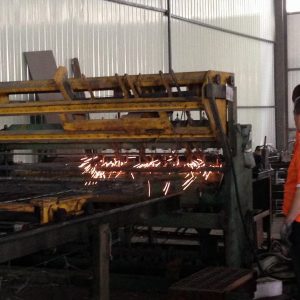baby chick cage Everyone knows that in order to improve the efficiency of chicken raising, except for market factors, it is necessary to work hard on the cost of raising chickens. How to reduce the cost of raising chickens has become the common voice of chicken raisers. The following editor summarizes the feeding experience of major chicken farmers, and summarizes the following techniques for reducing chicken costs.
How to reduce feed costs?
In terms of feeding: scientifically formulate rations, farmers can prepare their own full-price rations according to actual conditions, which can greatly reduce feed costs. If you need to buy full-price feed, you should try to feed and compare, so as to buy high-quality and low-cost feed; feed less frequently, and do not overfill at a time. According to the test, when feed is added to 2/3 of the trough, more than 12% is wasted; when added to 1/2, 5% is wasted; when added to 1/3, only 2% is wasted; timely beak cutting can not only prevent beak addiction. Occurs, and can effectively reduce feed waste. The feed consumption of chickens that have been beaked is 3% lower than that of chickens that have not been beaked. Chicken flocks generally perform beak cutting or trimming for the first time at the age of 10 days and the second beak cutting or beak trimming at 12 weeks of age.
Feed storage and storage: improper storage of feed, easy to mold and deterioration, increased fat oxidation, vitamin destruction, reduce the value of feed, but also can produce toxins, causing chicken poisoning. Therefore, during the preservation of the feed, care should be taken to avoid direct sunlight, and pay attention to ventilation, moisture and insects. For long-term storage, additives such as antioxidants and antifungal agents should be added to improve the utilization of feed.
How to reduce the cost of treatment?
Adhere to the disease control policy of focusing on disinfection and epidemic prevention and supplemented by drug control. Good environmental disinfection is very important. It is necessary to implement an all-in and all-out feeding method, through a certain period of empty houses and strict and comprehensive disinfection, so that the chicken house basically reaches a sterile state, and provides a safe and hygienic breeding environment for the next batch of house chickens.
To implement scientific epidemic prevention and reduce the occurrence of epidemic diseases, scientific epidemic prevention procedures should be formulated according to the epidemic situation and characteristics of the epidemic, and according to the law of antibody growth and decline, the local vaccine should be selected to ensure that the immune density reaches 100%. Disease prevention cannot rely too much on vaccines or use vaccines as medicines. Short immunization intervals or repeated immunizations can easily cause immune failure and immune paralysis, weakened immunity, and more destructive effects.
The management of disease prevention in chicken farms is particularly important. Many diseases can be prevented through careful daily management. Generally, chicken farms can achieve profitability without major diseases. If it is a large scale Poultry farms can also see significant economic benefits in terms of feeding well.

